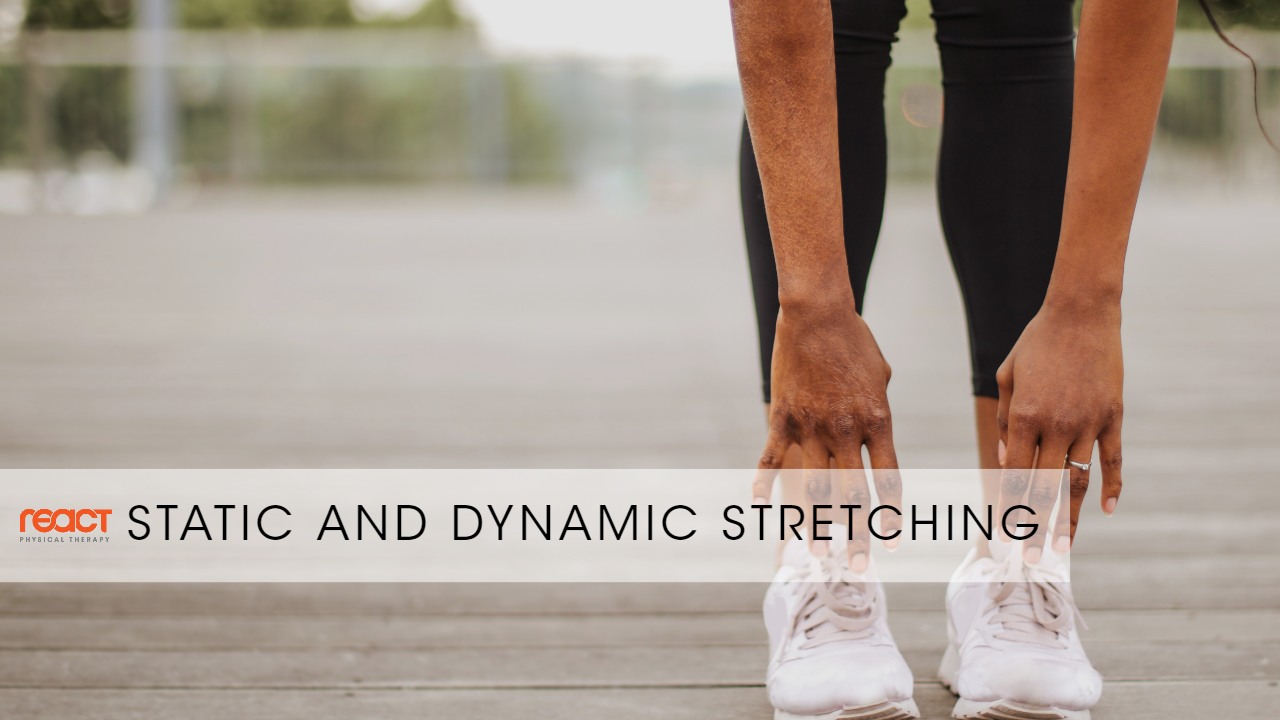Static and Dynamic Stretching

There are a variety of different ways you can stretch, each of which has its own positive and negative effects. It depends on your level of activity and physical goals that will determine which type of stretching will be most beneficial for you.
In general, stretching can be classified as either static (without movement) or dynamic (with movement).
Static Stretching
For static stretching, you can perform this actively (by yourself) or passively (with external assistance). An example of an active static stretch is when you pull your arm across your body to stretch the back of your shoulder and holding it for 10-30 seconds. An example of a passive static stretch is having someone pull your leg towards the front of your body to stretch the back of your leg and holding it for 10-30 seconds.
Dynamic Stretching
There are also two common types of dynamic stretching. These include active dynamic stretching and ballistic stretching. Active dynamic stretching involves gently moving in and out of a stretched position. An example of this would be performing a cat-cow exercise. Ballistic stretching involves using a forceful and fast motion to move your body into certain ranges of motion. An example of this would be kicking one leg in an up and down motion.
As always, be sure to consult a physical therapist if you are unsure which type of stretching would be most beneficial for you.